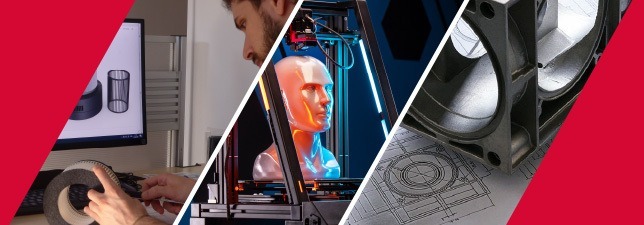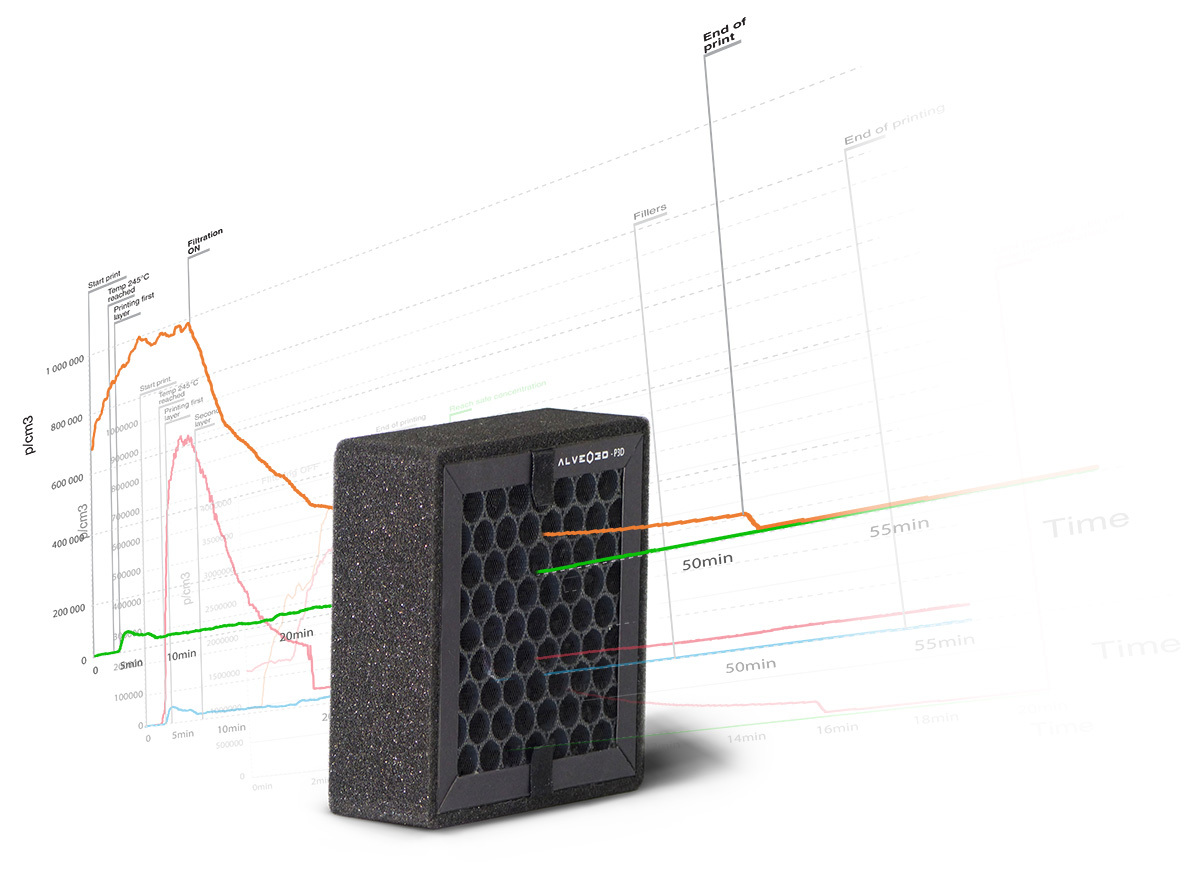I. The hidden impact of 3D printing
3D printing, a revolution in the world of manufacturing, promises to transform industries by enabling the rapid production of parts on demand. However, Alveo3D recent study raises significant environmental and health concerns regarding the harmful emissions generated by this technology. This article explores the implications of these findings and suggests measures to mitigate these risks.
Harmful emissions in 3D printing
3D printing, or additive manufacturing, involves the layering of materials of plastique to create a three-dimensional object. This process can release fine particles (PM) and volatile organic compounds (VOCs) into the air. These emissions vary according to the type of printing technology used (such as powder bed fusion or molten filament deposition) and the materials (plastics, resins, metals).
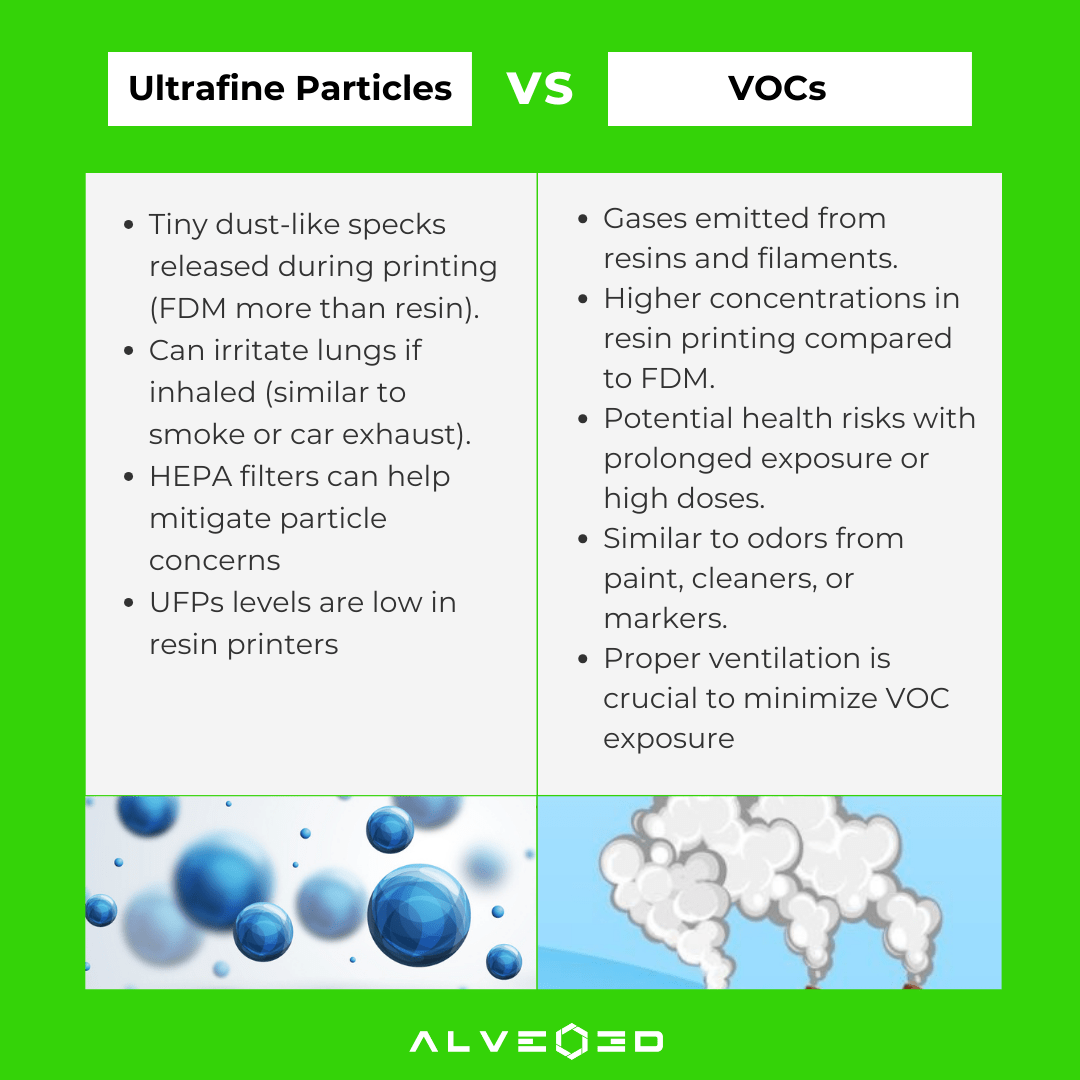
II. Our study on nanoparticle emissions in 3D printing and P3D filter efficiency measurements
Considering the chemical risks associated with 3D printing filaments, and to better understand and act regarding nanoparticle emissions, we provide you with a study conducted in 2021 in our Alveo3D laboratory. In this paper, we quantified the toxic and harmful nanoparticle emissions during FDM 3D printing.
This study can be downloaded at the bottom of the page.
- In your opinion, is PLA truly safe?
- Do you think that changing filaments during 3D printing is harmless?
- What is the efficiency of the P3D filter based on the filaments used?
- A detailed protocol
- The measurements conducted on different filaments: ABS, PLA, and PETG
- The P3D filtration efficiency
- The risks when changing filament
- Our conclusions and recommendations to protect yourselves from these toxic emissions
We focused on the most common filaments: ABS, PLA, PETG. In your opinion, which one is the most emissive? Find the answer in the study.
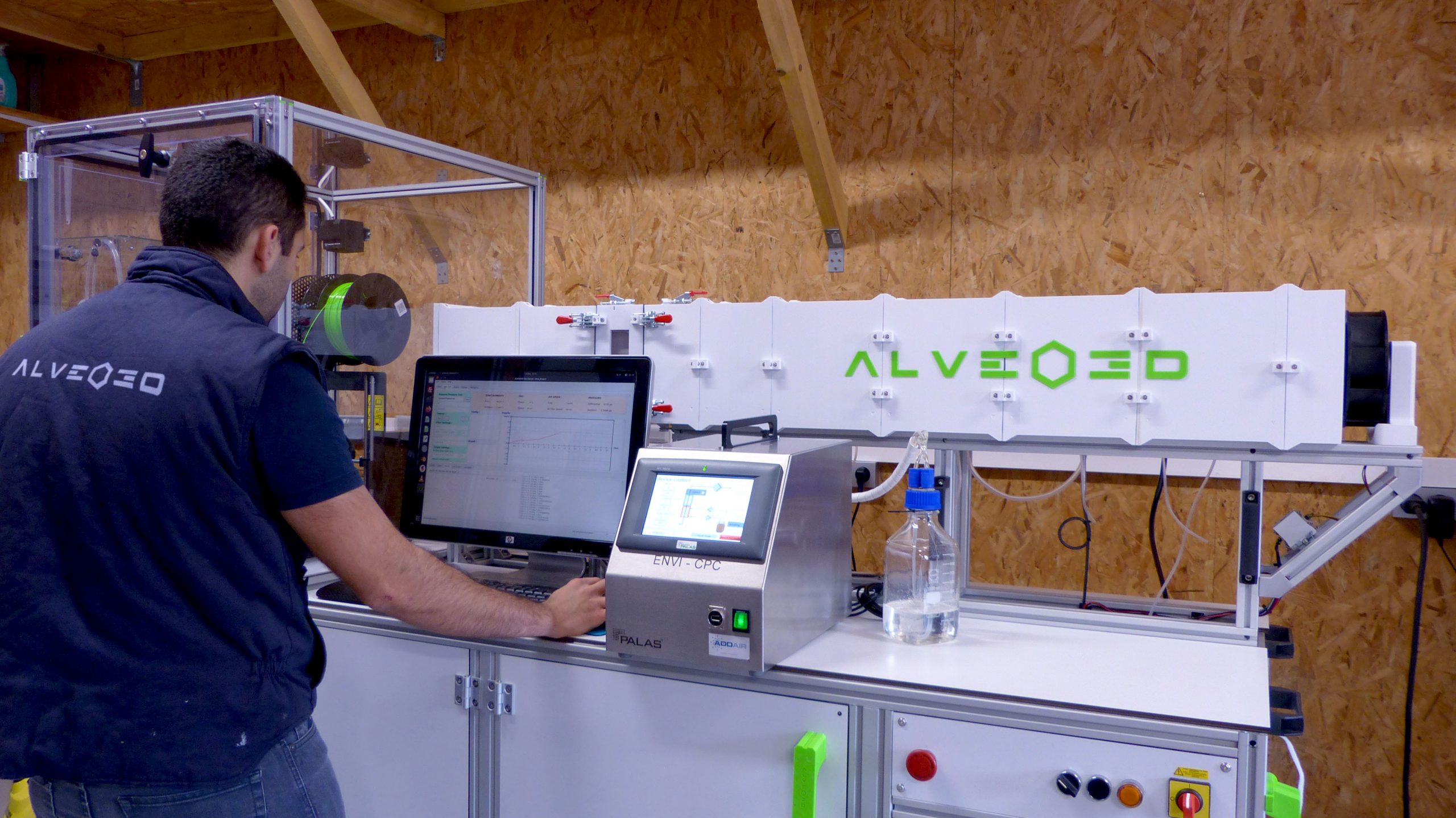
III. How effective is the P3D filter on toxic emissions?
“Emissions, dangers and Solutions! ” .Toxic and harmful to health emissions are produced by 3D printing. So we tested our P3D filter. The various measurements conducted, with and without filtration, reveal that our filtration system drastically reduces exposure to the toxic emissions generated by 3D printers
We confirmed the very high efficiency of the P3D filter, which is close to a minimum rate of 97.36%.To protect yourself from these nanoparticle emissions and to limit the risks, it is highly recommended that you use a tested and certified HEPA13 filter during FDM 3D printing.
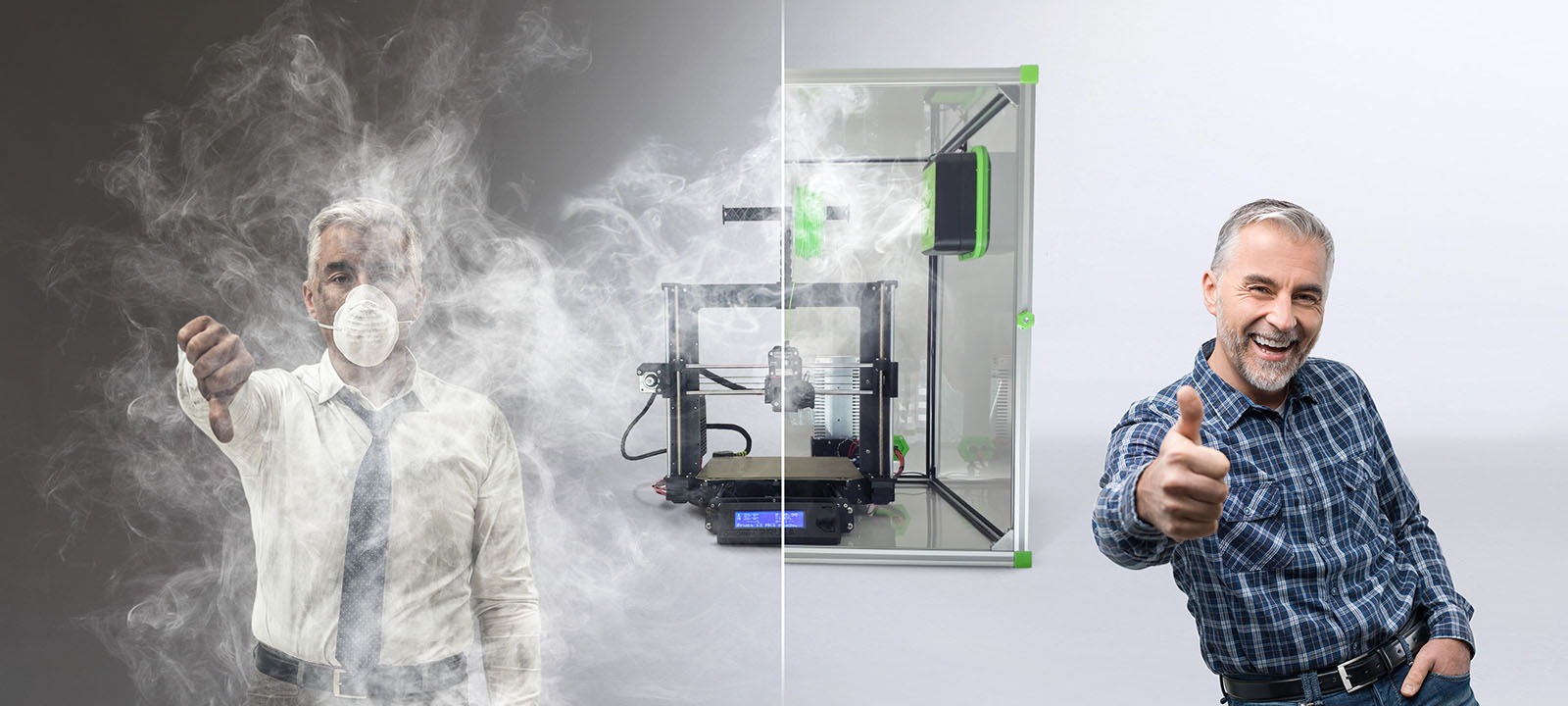
IV. Why is it important to use a tested and certified filter to limit the risks of toxic emissions?
Have you ever wondered which filament is the most emissive? We were surprised to see how many nanoparticles it emits! Discover the answer in our study!
